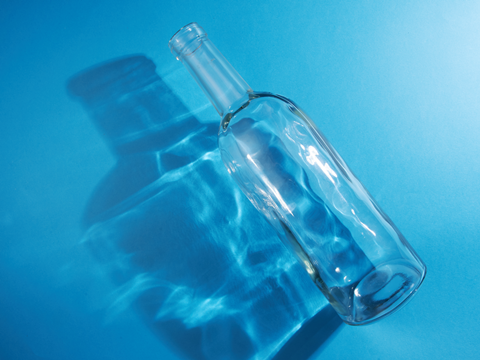
In order to meet the glass industry’s net zero goal by 2050, the European Container Glass Federation (FEVE) advocates for production facilities to adopt low-carbon energy, supported by EU financial instruments – and for customers to keep choosing and recycling glass packaging.
In its new report, “One Destination, Multiple Pathways: How the European Container Glass Industry in Decarbonizing Glassmaking”, the Federation lays out the ‘first and most comprehensive industry-wide research’ surrounding the decarbonization of glass manufacturing.
With 162 glass manufacturing plants believed to exist across Europe, FEVE claims that over €140 million’s worth of EU exports are packaged in glass. Around 45,000 manufacturing companies are thought to rely on glass packaging to sell their products, 98% of them SMEs.
Reportedly, though, 80% of the glass container industry’s direct carbon emissions currently stem from the combustion of natural gas. In order to reach the glass industry’s net zero goal by 2050, FEVE emphasizes the importance of affordable, low-carbon energy.
Transitioning into low-carbon energy sources is therefore highlighted as a priority, with over 90% of glass containers manufactured in the EU made by companies that have committed to the Science-Based Targets initiative (SBTi).
The glass container industry is currently thought to invest over €600 million into innovation and decarbonization every year, which includes efficiency and plant upgrades. Now FEVE makes a conservative estimate that €20 billion in additional capital expenditure – excluding increased operational costs linked to securing and using low-carbon energy sources – will be required by 2050 to upgrade production technologies and decarbonize operations.
As such, the EU must support new or existing financial instruments to aid in this transition, FEVE says. Glass furnaces have a lifespan of 10 to 15 years and an annual replacement rate of approximately 7% to 10%; the report asserts that such maintenance should be taken as an opportunity to introduce low-carbon technologies.
FEVE goes on to encourage glass industry customers to ‘continue trusting and choosing glass as a key packaging solution’. It describes glass as an ‘indispensable’ packaging material with ‘critical’ applications in the pharmaceutical, food, beverage, perfumery, and cosmetic sectors.
It argues that glass is a ‘permanent material’ that can be recycled indefinitely without sacrificing its quality; with a recorded collection rate of 80.2% across Europe in 2022, the majority of that glass was then recycled in a closed loop, FEVE asserts.
Glass is also described as a ‘safe’ material that, regardless of the number of times it is recycled, does not leach harmful chemicals into the products it packages.
FEVE adds that the glass container industry supports 125,000 direct and indirect jobs.
“While the industry is fully committed to this transformation, it cannot achieve its ambitious goals alone,” FEVE states. “Collaboration is essential for the container glass industry to deliver a packaging solution that is not only fully circular but also climate neutral.
“Glass container manufacturers remain resolutely committed to overcoming the decarbonization challenge, meeting growing customer demand for low-carbon glass, and positioning glass as the sustainable packaging material of the future.”
To accompany the report, a new section on the FEVE website features an Online Map with over 90 case studies of decarbonization efforts across the continent.
A notable step to reduce carbon emissions in the glass industry comes from Ardagh Glass Packaging-Europe (AGP-Europe). Its NextGen Furnace in Obernkirchen, Germany aims to operate with 80% electrical heating and 20% gas.
With a current average of 60% electrical heating, AGP-Europe claims that the glass bottles produced at the NextGen Furnace have saved around 18,000 tonnes of CO2 since the start of 2024 and achieved consistent CO2 emissions reduction of 64%. As such, it has been nominated for a Sustainability Award under the Commercialized Climate category.
Meanwhile, we spoke to John Cant, head of Diageo Sustainable Solutions, and Thomas Sauer, president and CEO of Exxergy, about the companies’ collaboration to create a new coating for glass; this would theoretically enable lightweighting, preserve the quality and strength of reusable glass containers, and reduce CO2 emissions by 30%.
If you liked this story, you might also enjoy:
The ultimate guide to the Packaging and Packaging Waste Regulation in 2024
How are the top brands progressing on packaging sustainability?
Sustainable Innovation Report 2024: Current trends and future priorities
Everything you need to know about global plastic sustainability regulation


















No comments yet